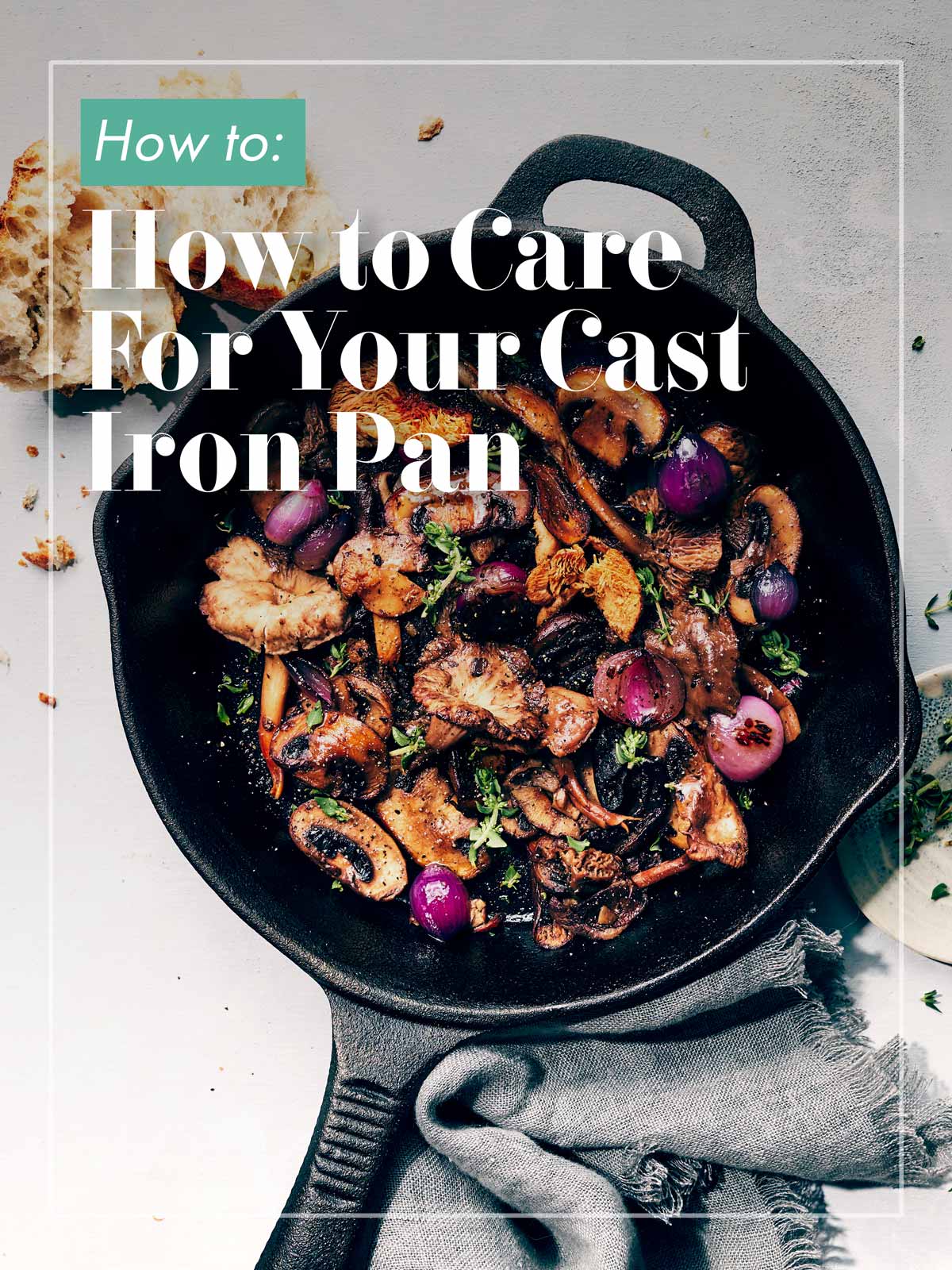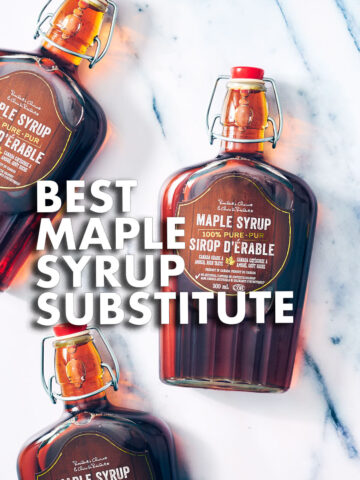Now that you’ve properly seasoned your cast iron pan, now all you need to do is maintain it. We break down the essential steps you should follow to take good care of your cast iron pan. Maintaining your cast iron isn’t nearly as hard as some make it out to be.

You’ve got your pan and you’ve seasoned it...now what? Well, thankfully all you need to do now is enjoy your pan, use it regularly, and follow some quick care steps after use. Some people follow very elaborate maintenance routines for their cast iron pans, but in truth, we don’t think it’s all that necessary. Cast iron is pretty durable (heck, it’ll likely outlast you), so few simple steps is really all you need.
Initial seasoning: If you need a quick refresher on how to season your pan for the first time, read our post on “How to Season a Cast Iron Pan”. Once you’ve completed that step, keep reading below for tips on how to give your cast iron pan the love it deserves (without driving yourself crazy).
How to Clean & Maintain A Cast Iron Pan
Once you’ve built up a good layer of initial seasoning, now all you need to do is maintain it. The good news is that the initial seasoning creates a layer that’s a lot more durable than many give it credit for. It’s not just the process of adding oil to the pan; but rather, the chemical reaction that takes place after it. In seasoning a pan, the oil gets heated so hot that it reacts to create a plastic-y coating that’s essentially bonded to your pan. Technically, that process is called polymerization. What this means is that this layer of seasoning is not going to instantly disappear with a light scrub in the sink or even a few drops of soap...so you can throw that myth out the window (you’re welcome).
Three steps to follow after using your cast iron pan:
Step 1 - Wash the pan: Cleaning the pan immediately after use will make it easier to remove any stuck on bits of food. While the pan is still warm, give it a good rinse in warm water in the sink. Avoid dunking a searing hot cast iron pan into cold water, as this could potentially cause the pan to warp or crack from being cooled too rapidly (“thermal shock”). It’s unlikely, but best to play it safe. Now, if you can’t get to cleaning your pan right away, let it sit on the stove as is until you can get to it. Don’t fill the pan with water and let it sit for an extended period of time. Soaking cast iron in water encourages rusting.
Most of the time, warm water and a sponge (or brush) is sufficient to clean your pan. If you need it, a small bit of gentle soap is totally fine to use on a seasoned pan. Avoid harsh cleaning products or scrubbing your pan so aggressively that your arms get tired. Neither are necessary.
Step 2 - Dry the pan: After your pan is clean, dry it thoroughly. You can do this by placing it on the stove and heating it until all water has evaporated. Alternatively, you can pop the pan in the oven (about 5 minutes at 350°F should do the trick). Take care when removing the pan from the heat source (especially the oven) - as the handle could be hot.
Step 3 - Oil the pan: Once the pan is dry, remove it from the heat. Take a paper towel, dip it in your oil of choice (ideally vegetable oil), then rub the oil into the pan. Since the pan will be warm, to keep your fingers safe, you can use metal tongs or the end of a wooden spoon to push the paper towel around. You’re aiming for a very thin coat of oil. If you’ve used too much, simply blot some of it up with a clean paper towel.
And just like that, you’ve given your cast iron pan the love it deserves! Use the pan as often as you’d like and once you’re done using it, make sure to clean, dry and oil it to keep it nice and seasoned for the next use. Once you get into a routine, the light coat of oil will take you mere seconds to do and will keep your cast iron in great shape for many years to come.





Ami says
Very informative article!
I m new at seasoning! Approximately how many times should i repeat the sequence before i use my pan/tava ?
Mary says
How to clean build up on outside of cast iron pan?
Bri says
Hi Mary! Because the inside and outside of the pan are the same material, the same general principles apply. What kind of build up do you have on the outside of your pan? If it's quite caked on, you could putting your pan in the sink (bottom side up) and pouring some hot water on top, giving it a gentle scrub to see if that helps loosen.
Brent says
If food gets stuck on my pan, is it okay to use a plastic food scraper instead of a plastic scrubbing brush? It definitely gets the food off the pan, but it seems like maybe it's scraping some of the seasoning off, too. Am I doing this all wrong?
Bri says
Hi Brent! Our go-to is a soft sponge (not the hard plastic ones). If you have a plastic food scraper, you can definitely use that, just go easy on it! The goal is to get the food off without scraping too aggressively. Once your pan gets a more established seasoning on it, this polymerized coat shouldn't really come off with a gentle scrub to get off any stuck on bits. If you're worried about food sticking, giving the pan a rinse while it's still warm can help. Avoid submerging the pan while it's still screeching hot though, that can cause thermal shock (unlikely, but not worth the gamble). Hope this helps! Feel free to reach out with any other questions. Have a great day!
Angie says
Thank you so very much for this article! Very well explained, I really liked the step by step procedure and I'm ready to put it on practice as I've just bought a preseasoned cast iron pan. Thank you, thank you!
Bri says
So glad you enjoyed the post Angie! Congrats on the new pan! Hope you enjoy seasoning & using it for years to come:)